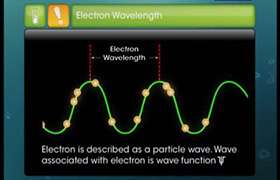CBSE Class 11-science Answered
Shape of p orbital:
At any one energy level it is possible to have three absolutely equivalent p orbitals pointing mutually at right angles to each other. These are arbitrarily given the symbols px, py and pz.
For example, the p orbitals at the second energy level are called 2px, 2py and 2pz. There are similar orbitals at subsequent levels - 3px, 3py, 3pz, 4px, 4py, 4pz and so on.
All levels except for the first level have p orbitals. At the higher levels the lobes get more elongated, with the most likely place to find the electron more distant from the nucleus.
The smallest possible principle number for any p orbital is 2 (if n=1, then there is only a 1s orbital). If n=2 there are three p orbitals called 2px, 2py, and 2pz. The subscript indicates the axis along which the p orbital lies. The three p orbitals are identical in size, shape and energy, and they differ only in there orientation. Boundary surface diagrams indicate that the shape of the p orbitals is that of two lobes on opposite sides of the nucleus. This gives the p orbitals a ‘dumbbell’ shape. As in the case of s orbitals, p orbitals increase in size with increasing values of n.




